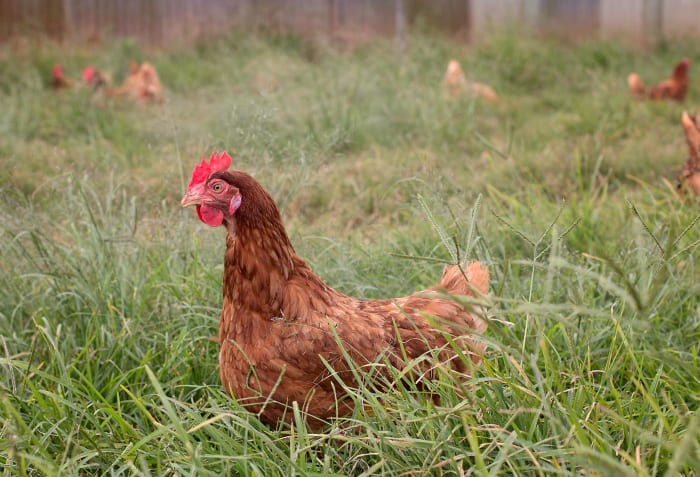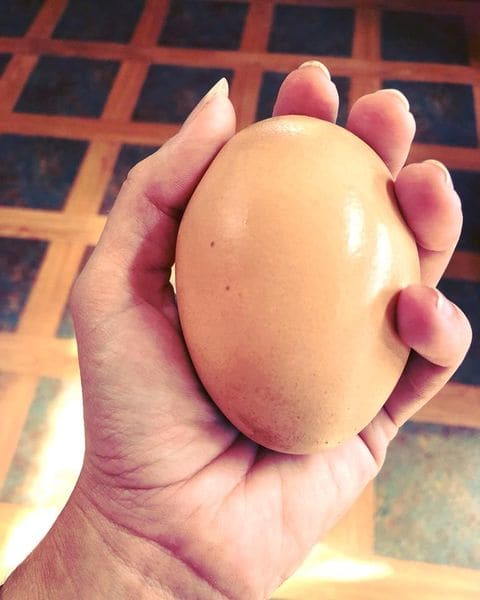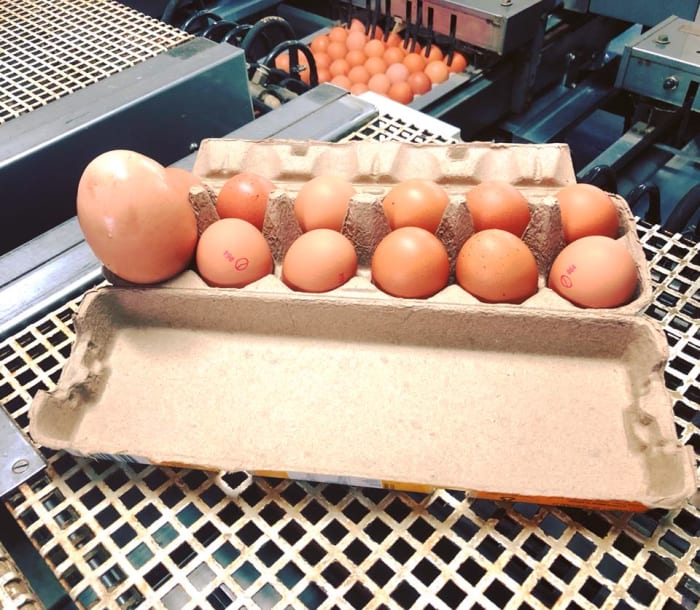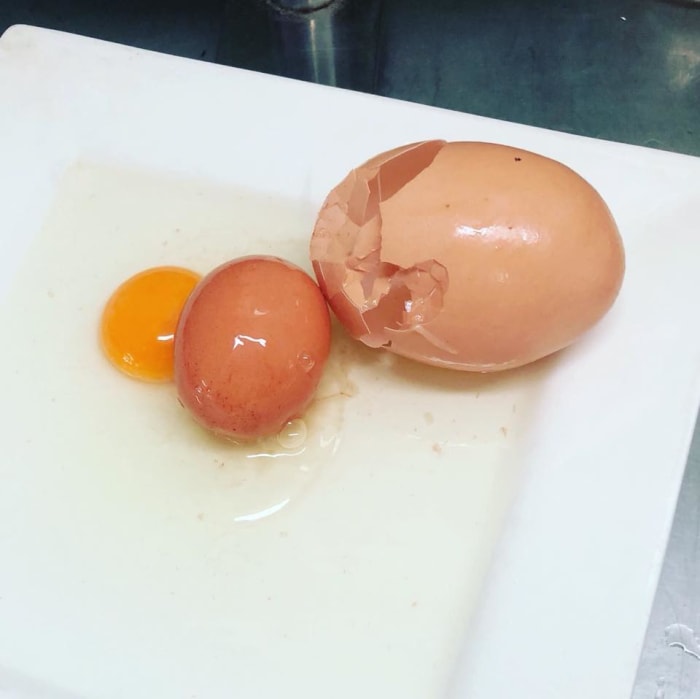Note: we are republishing this story which originally made the news in March 2018.
In a feather-ruffling revelation, a colossal chicken egg containing a surprise smaller egg has left a seasoned poultry expert utterly perplexed, marking an unprecedented event in the barnyard world.
This exceptional babushka egg made its grand entrance courtesy of a free-range chicken at Stockman’s Eggs, nestled on the Atherton Tablelands, just west of Cairns, in the far north Queensland region.

Photo Credit: Stockman’s Eggs/Facebook
Farmer Scott Stockman recounted the extraordinary find, noting that one of his diligent staff members stumbled upon the egg, prompting Stockman’s immediate investigation.
Weighing in at a substantial 176 grams, a whopping three times the average egg size, this egg was no ordinary find, leaving Stockman to jest, “she would have had a pain in the bum,” referring to the chicken’s probable experience in laying such an unusual egg.

Photo Credit: Stockman’s Eggs/Facebook
Upon cracking the colossal egg, the astonishment escalated as a second, perfectly formed, smaller egg was unveiled. Stockman, still in disbelief, exclaimed, “It’s just incredible actually — to have two perfectly formed eggs together.”
Associate Professor Raf Freire, hailing from Charles Sturt University’s veterinary sciences school and an expert in the field, admitted that in his extensive career, he had never witnessed a phenomenon of this nature.

Photo Credit: Stockman’s Eggs/Facebook
“To be honest, I don’t really know how it’s come about,” Freire expressed, delving into the potential reasons behind this egg-stravagant event. He suggested that while it’s not uncommon for stressed hens to retain eggs temporarily, the free-range scenario of this incident deepened the mystery. Typically, a retained egg would fall out within hours, but in this case, a subsequent day saw the release of another ovum, with the chicken deciding to envelop both eggs in a shared shell.
From a biological standpoint, comprehending why the smaller egg didn’t naturally release is proving to be quite puzzling, Freire acknowledged.
Addressing concerns about the egg’s safety, Freire reassured the public, stating, “Normally the double yolks or the triple yolks are perfectly fine, so I don’t see why there would be anything wrong with this one.”

Photo Credit: Stockman’s Eggs/Facebook
Stockman, practical in his approach, revealed that with a daily egg production of approximately 50,000, this specific egg wasn’t deemed fit for consumption, preserving it as a fascinating artifact rather than a culinary delight.
This extraordinary tale of the babushka egg has sent ripples through the poultry community, leaving experts and enthusiasts alike eagerly anticipating the next chapter in the captivating world of barnyard surprises. Stay tuned for more egg-centric updates as nature continues to crack open its mysteries.
Sources: ABC Net


